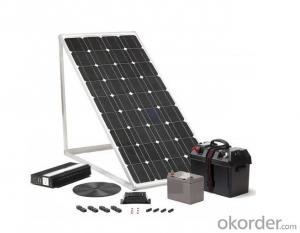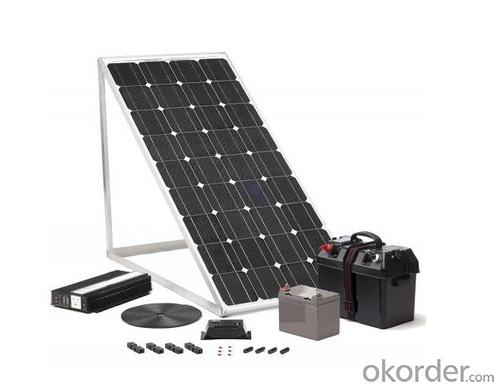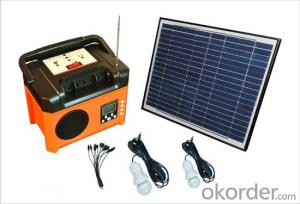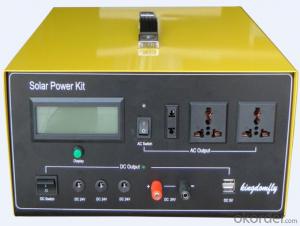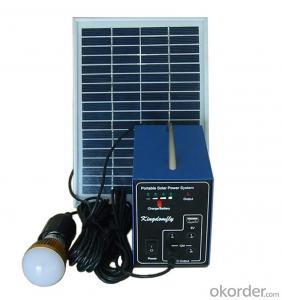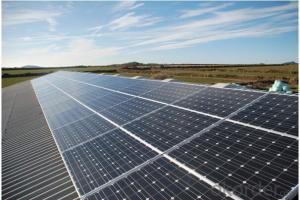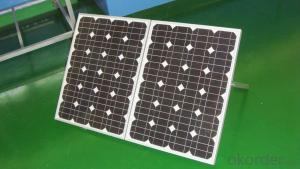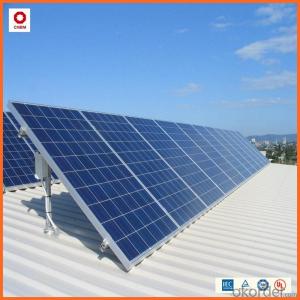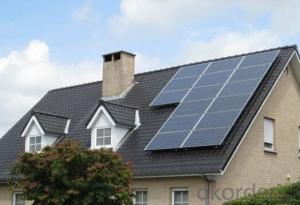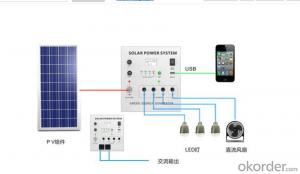Enphase Solar Energy Systems - Solar System 15W Made in China
- Loading Port:
- China Main Port
- Payment Terms:
- TT OR LC
- Min Order Qty:
- -
- Supply Capability:
- -
OKorder Service Pledge
Quality Product, Order Online Tracking, Timely Delivery
OKorder Financial Service
Credit Rating, Credit Services, Credit Purchasing
You Might Also Like
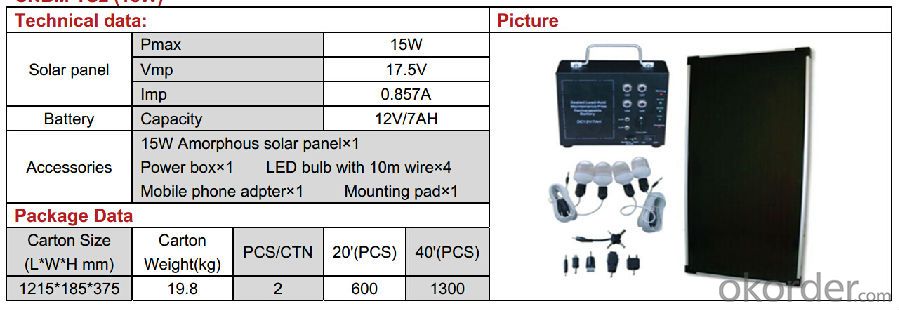
- Q: Can solar energy systems be used in areas with limited access to solar grounding equipment?
- Yes, solar energy systems can still be used in areas with limited access to solar grounding equipment. While proper grounding is important for safety and system performance, there are alternative methods available that can be used in such areas. These methods may involve using specialized mounting systems, such as pole-mounted or ballasted systems, or utilizing ground-mount systems that do not require extensive grounding equipment. It is essential to consult with solar energy professionals or engineers to determine the most suitable and safe approach for installing solar energy systems in these situations.
- Q: How does the orientation of solar panels affect their performance?
- The orientation of solar panels plays a crucial role in determining their performance and efficiency in harnessing solar energy. The ideal orientation of solar panels is to face directly towards the sun, maximizing the amount of sunlight they receive throughout the day. In most cases, solar panels are installed on rooftops or mounted on frames, allowing them to be adjusted to the desired angle. The optimal orientation depends on the geographical location of the solar panels, as well as the season and time of day. When solar panels are angled towards the sun, they are able to capture the maximum amount of sunlight, maximizing their efficiency. If solar panels are not properly oriented, they will receive less sunlight and produce less electricity. In the northern hemisphere, solar panels are typically installed facing south to capture the most sunlight throughout the day. Conversely, in the southern hemisphere, solar panels are oriented towards the north. This south or north orientation allows the panels to receive sunlight for the longest duration during the day. The tilt angle of solar panels also affects their performance. The ideal tilt angle is typically equal to the latitude of the location where the solar panels are installed. However, this angle can be adjusted to optimize energy production during different seasons. For instance, in winter, the panels can be tilted at a steeper angle to capture more sunlight, while in summer, a shallower tilt angle can prevent overheating. If solar panels are improperly oriented, their performance can be significantly reduced. In such cases, they may not generate the expected amount of electricity, resulting in lower energy output. Therefore, it is crucial to consider the orientation and tilt angle when installing solar panels to ensure maximum efficiency and optimal energy production.
- Q: Can a solar energy system be used to power electric vehicles?
- Yes, a solar energy system can be used to power electric vehicles. Solar panels can generate electricity that can be stored in batteries and used to charge the batteries of electric vehicles. This can provide a sustainable and renewable source of energy for powering electric vehicles.
- Q: What is the impact of saltwater spray on solar panels?
- Saltwater spray can have a negative impact on solar panels. The salt in the water can corrode the surface of the panels, leading to a decrease in their efficiency over time. It is important to regularly clean and maintain solar panels in coastal areas to minimize the effects of saltwater spray and ensure optimal performance.
- Q: What is the difference between a monofacial and bifacial solar panel?
- A monofacial solar panel is a traditional solar panel that only utilizes one side of the panel to capture sunlight and convert it into electricity. The single side of the panel is covered with photovoltaic (PV) cells that absorb sunlight and produce electrical current. Monofacial panels are the most common and widely used type of solar panels. On the other hand, a bifacial solar panel is designed to capture sunlight from both sides of the panel. It has PV cells on both the front and back sides, allowing it to generate electricity from sunlight that is reflected or scattered onto the back side. This design offers an advantage over monofacial panels as it can generate more energy by harnessing light that would have otherwise been wasted. The main difference between monofacial and bifacial solar panels lies in their efficiency and energy output. Bifacial panels can produce more electricity per unit area than monofacial panels due to their ability to capture light from both sides. This makes bifacial panels a suitable choice for situations where space is limited, and maximizing energy production is crucial. Furthermore, bifacial panels can benefit from certain installation configurations that allow light to bounce off the ground or other nearby surfaces onto the backside of the panel, further increasing their energy output. This makes them particularly effective in environments with high levels of ground reflectance, such as snow-covered areas or locations with white rooftops. However, it is important to note that the increased efficiency and energy output of bifacial panels come at a higher cost compared to monofacial panels. Bifacial panels require more complex design and manufacturing processes, which contribute to their higher price. Additionally, the installation of bifacial panels may require specialized mounting systems to ensure proper exposure to both sides of the panel. In summary, the main difference between monofacial and bifacial solar panels lies in their ability to capture sunlight. Monofacial panels use only one side of the panel to generate electricity, while bifacial panels utilize both sides, resulting in higher efficiency and energy output. However, the higher cost and specific installation requirements make bifacial panels a more specialized choice compared to the widely used monofacial panels.
- Q: Can solar energy systems be used for greenhouse heating?
- Yes, solar energy systems can be used for greenhouse heating. Solar panels can be installed to convert sunlight into electricity, which can then be used to power heating systems within the greenhouse. Additionally, solar thermal systems can be used to directly heat water or air within the greenhouse. These systems provide a sustainable and cost-effective solution for greenhouse heating, reducing reliance on fossil fuels and minimizing environmental impact.
- Q: Can a solar energy system power an entire home?
- A whole home can be powered by a solar energy system. With advancements in solar technology, generating enough electricity from solar panels to meet the energy needs of a typical household is now possible. The system consists of solar panels that convert sunlight into electricity, an inverter that transforms the DC electricity generated by the panels into AC electricity for use in the home, and a battery storage system to store excess energy for use during periods of low sunlight or cloudy weather. The size and capacity of the solar energy system will vary depending on the energy requirements of the home. Factors such as the number of people living in the house, energy consumption habits, and the amount of sunlight in the area will determine the number of solar panels needed. Conducting a comprehensive energy audit is crucial to determine the appropriate system size. By installing a solar energy system, homeowners can greatly reduce or eliminate their reliance on the traditional electrical grid. In some cases, surplus electricity generated by the system can be sold back to the grid, resulting in potential cost savings. Moreover, solar energy is a clean and renewable source of power, which reduces carbon emissions and benefits the environment. However, it is important to note that various factors, including the location and orientation of the panels, the amount of sunlight available, and the weather conditions, can affect the efficiency and effectiveness of a solar energy system. Therefore, it is advisable to consult a professional solar installer to design and install a system that meets the specific needs of the home.
- Q: Can solar energy systems be used for powering healthcare facilities?
- Yes, solar energy systems can definitely be used to power healthcare facilities. Solar panels can generate electricity to run medical equipment, lighting, and heating or cooling systems in hospitals, clinics, and other healthcare facilities. This renewable energy source is not only environmentally friendly but also reliable and cost-effective in the long run, making it a suitable option for powering healthcare facilities, especially in areas with limited access to the electrical grid.
- Q: What are the different financing options for solar energy systems?
- There are several financing options available for solar energy systems, including purchasing the system outright with cash, taking out a solar loan, leasing the system, or entering into a power purchase agreement (PPA). Each option has its own advantages and considerations, such as upfront costs, ownership of the system, maintenance responsibilities, and potential savings. It is important to research and compare these options to determine which one aligns best with your financial goals and circumstances.
- Q: Are there any financial incentives for installing solar energy systems?
- Yes, there are several financial incentives available for installing solar energy systems. These incentives vary by country and region but can include tax credits, grants, rebates, and net metering programs. Additionally, installing solar panels can help reduce electricity bills and increase property value, resulting in long-term financial benefits.
Send your message to us
Enphase Solar Energy Systems - Solar System 15W Made in China
- Loading Port:
- China Main Port
- Payment Terms:
- TT OR LC
- Min Order Qty:
- -
- Supply Capability:
- -
OKorder Service Pledge
Quality Product, Order Online Tracking, Timely Delivery
OKorder Financial Service
Credit Rating, Credit Services, Credit Purchasing
Similar products
Hot products
Hot Searches
Related keywords
